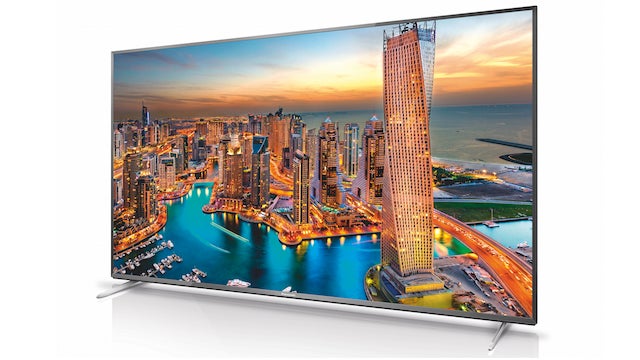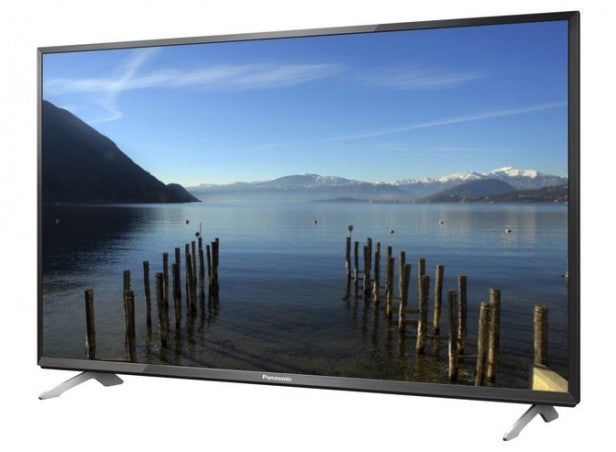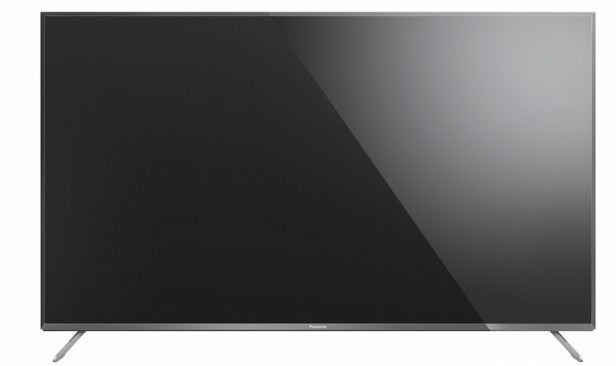Panasonic TX-50CX700B Review
Panasonic TX-50CX700B
Possibly the best-value 4K TV yet.

Sections
- Page 1 Panasonic TX-50CX700B Review
- Page 2 Picture Quality Review
- Page 3 3D, Sound and Conclusions Review
Verdict
Pros
- Great picture quality and features for the money
- The Firefox OS is very good
- Polished upscaling
Cons
- Motion handling could be better
- Some minor backlight flaws
- 3D lacks detail
Key Specifications
- Review Price: £899.00
- 50in LCD with edge LED lighting
- Native 4K UHD resolution
- 3D playback
- Firefox OS operating system
- Multimedia playback from USB/DLNA
What is the Panasonic TX-50CX700B?
On the surface, at least, the TX-50CX700B appears to be a serious bargain. For £900, you get a 50in screen with a 4K UHD resolution of 3,840 x 2,160 pixels, alongside an impressive number of picture and smart TV features.
Panasonic TX-50CX700B – Design and features
The TX-50CX700B is one of this season’s most distinctive TVs – in quite an unassuming way. Its bezel is startlingly thin, even by today’s super-skinny standards; it has a vaguely metallic silver sheen; and the TV is supported on two “blade” feet so thin that you can barely see them when you’re looking at the set straight on.
The fact that the feet sit near the TV’s outer edges could be a problem for people wanting to position the set on fairly narrow furniture. However, this is obviously less of an issue on this 50in set than it would be on a much bigger model.
SEE ALSO: Best 4K TVs 2015

Connectivity is fair to middling. There are only three HDMIs, but you do at least get plenty of multimedia support from three USBs (one 3.0, two 2.0), an SD card slot and both Wi-Fi and hard-wired network connection options.
The network connections are particularly significant since they’re tied in with Panasonic’s new smart TV operating system. Created in conjunction with Mozilla around its Firefox platform, my Home Screen 2.0 really does mark a leap forward for Panasonic. Its presentation is clean, bright, colourful and uncluttered. Best of all, it’s hugely customisable, easily enabling you to create your own streamlined homescreen with instant access to your favourite content.
The shift to the relatively open Firefox platform should ultimately enable Panasonic to secure far more apps for its smart TV platform than it’s been able to manage before, thanks to the busy Firefox app community.
Most of the key video big-hitters are already present, including the Netflix and Amazon 4K UHD streaming apps. A firmware update with see the addition of Freeview Play – the latest system for accessing Freeview channels on demand. We’ll be looking at Panasonic’s latest smart TV system in a dedicated review soon.
Turning to the TX-50CX700’s picture specifications, the headliner is its native 4K UHD resolution. But it’s also the proud owner of one of Panasonic’s new Super Bright LCD panel designs, delivering more brightness for less power; a pseudo 800Hz effect via a combination of backlight scanning and frame interpolation processing; Panasonic’ Studio Master Drive advanced picture processing system; new wide colour gamut phosphors; and an edge-mounted LED lighting system that’s driven by local dimming to deliver a better contrast performance.
It’s also great to see that Panasonic has ditched the troublesome IPS panels that had such a negative impact on similar areas of its range last year.
As usual with a Panasonic TV, the TX-50CX700 is well stocked with picture setup tools, including the facility to adjust all of the set’s various processing systems. We’ll look at some of these tools in the next section. 
Perhaps surprisingly for such an affordable 4K UHD TV in 2015, the TX-50CX700 supports 3D using the active system. You don’t get any 3D glasses included for free, but any 3D support at all is welcome these days.
Panasonic TX-50CX700B – Setup
The TX-50CX700 is fairly straightforward to set up. We think this is chiefly because its core panel is much better than those the brand has been using on some of its previous models. It’s able to support a much wider range of setup “tastes”, without impacting certain aspects of the picture negatively.
For serious lights-down movie viewing, we reduced the backlight to around its 56 level, which achieved a good compromise between backlight evenness, black level depth and shadow detail. The contrast was set to around 80 to keep a lid on image noise, the adaptive backlight control feature was set to “mid”, and we switched off all noise reduction.
If you’re upscaling from HD, we’d suggest using the Resolution Remaster feature on its “mid” setting, since “high” can cause the picture to look gritty. Anything lower leaves a slightly soft impression.
Given that the set has a tendency to look slightly soft, it’s best to turn off all the noise reduction systems – except with really rough-looking source content. We’d also recommend that you use the set’s motion processing on its “mid” setting; we’ll explain why we felt compelled to do this in the Picture Quality section.
How we test televisions
We test every TV we review thoroughly over an extended period of time. We use industry standard tests to compare features properly. We’ll always tell you what we find. We never, ever, accept money to review a product.

